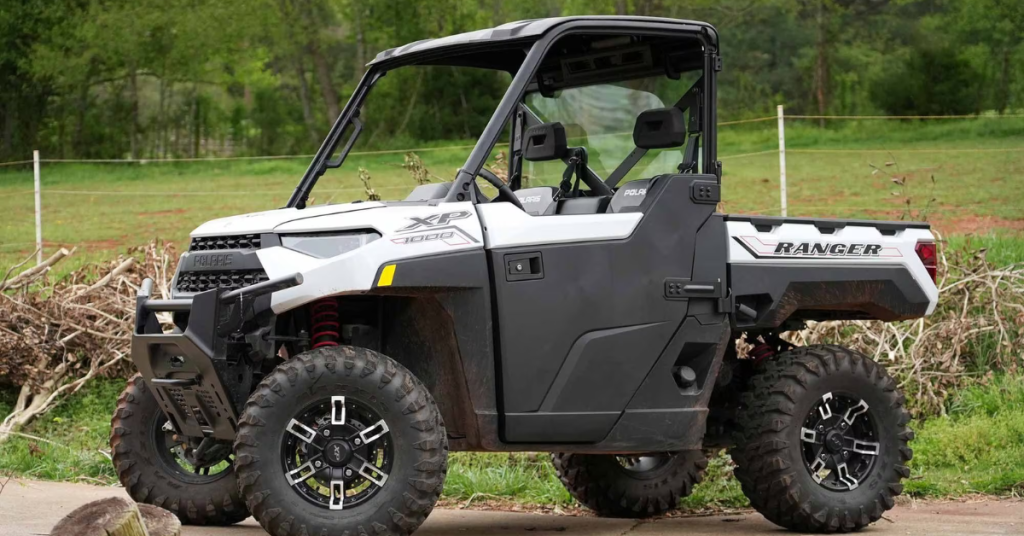The famous adage, ‘prevention is better than cure,’ holds true when it comes to maintaining a Polaris Ranger 1000. As an owner of this all-terrain vehicle, you may have experienced common problems such as clutch and shifting issues, and overheating. These problems can not only be frustrating but can also lead to costly repairs.
However, with the right knowledge and preventative measures, you can avoid these issues altogether and ensure that your Polaris Ranger 1000 runs smoothly for years to come.
In this article, we aim to provide you with technical and precise information on the most common problems with the Polaris Ranger 1000 and how to fix your Polaris Ranger 1000. We will discuss clutch and shifting issues, which are common among Polaris Ranger 1000 owners, and provide you with tips on how to fix your them. We will also discuss overheating and the preventative measures that you can take to avoid this issue.
Whether you’re a seasoned Polaris Ranger 1000 owner or a new one, this article will equip you with the knowledge and tools to maintain your vehicle and avoid common problems.
Table of Contents
Key Takeaways
- Clutch problems are the most common issue with Polaris Ranger 1000, resulting in excessive drag and hard shifting. Upgrading to aftermarket clutch systems is recommended, and owners should clean the clutch system every 500 miles.
- Shifting problems may occur due to a shift cable needing adjustment, but owners can adjust the cable themselves with the right tools.
- Clunking and rattling may indicate faulty U-Joints, which can be replaced with greasable units from Napa, TRW, or Spicer.
- Overheating can be caused by a faulty radiator cap, clogged radiator, temperature sensor, air blockage in the coolant system, or blown head gasket. Owners can prevent overheating by shutting off the machine instead of idling and following a proper maintenance schedule.
Fix Your Polaris Ranger 1000 Problems
Top Problems and Fixes

The top problems and fixes for the Polaris Ranger 1000 are discussed in detail, covering a range of common issues.
One of the most frequent problems is clutch issues, which may result in excessive clutch drag, hard shifting, screaming or whining noise when idling, and sudden RPM drops. The root causes of these symptoms include spyder rollers, alignment issues, and EBS bearing failure. To address these problems, aftermarket solutions such as Gilomen and Duraclutch clutch systems are recommended. Regular cleaning of the clutch system every 500 miles can also help prevent issues.
Another common issue is shifting problems, which may lead to grinding gears when putting the vehicle into gear from a stopped position. This issue is often due to the shift cable requiring adjustment, which can be done by owners themselves with the right tools.
Clunking and rattling may indicate faulty U-Joints, which can be replaced with greasable units from Napa, TRW, or Spicer. In addition, a knocking noise when starting the engine is normal and comes from the cam chain tensioner, which can be replaced with a mechanical tensioner to eliminate the noise.
Finally, overheating may stem from issues with the radiator cap, clogged radiator, temperature sensor, air blockage in the coolant system, or blown head gasket. To address these issues, owners can replace the radiator cap, clean the radiator with a water hose, bypass the temperature sensor, bleed air out of the coolant system, or conduct a head gasket test if necessary.
Read About:
- Fix Polaris Code 65590 Misfire Issues!
- Discovering The Polaris Magnum 330: Speed, Power, And Utility
- Fix Your Kawasaki Prairie 360 Problems
- Fix Your Kawasaki Mule SX Problems: Tips & Maintenance
Clutch and Shifting Issues
Shifting problems in the Polaris Ranger 1000 may occur when grinding gears during the vehicle’s start-up and can be attributed to a necessary shift cable adjustment. This issue can be easily resolved by adjusting the cable tension, which can be done by the owners themselves with the right tools. It is important to address this problem promptly to prevent further damage to the transmission and other related components.
Aside from shifting problems, clutch issues are also common in the Polaris Ranger 1000. Upgraded aftermarket clutch systems from Gilomen and Duraclutch are recommended to address excessive clutch drag, hard shifting, and sudden RPM drops.
It is also important to clean the clutch system every 500 miles to prevent wear and tear. Proper maintenance and the use of upgraded clutch systems can help prevent clutch problems and ensure the smooth operation of the Polaris Ranger 1000.
Overheating and Preventative Measures
Overheating is a potential issue for any machine, including the Polaris Ranger 1000. One possible cause of overheating in this vehicle is a blown head gasket, which can be identified by excessive bubbling in the coolant system. Other potential causes of overheating include a faulty radiator cap, a clogged radiator, or an air blockage in the coolant system.
To prevent these problems, it is important to perform regular cooling system maintenance, such as cleaning the radiator with a water hose (avoiding a pressure washer) and replacing the stock radiator cap with a new one if it causes a sudden loss of coolant.
If troubleshooting overheating issues, it is important to check the temperature sensor, which may not trigger the fan switch in time for the engine to stay below 220 degrees Fahrenheit. This can result in overheating at 230-250 degrees Fahrenheit. One solution to this problem is to bypass the temperature sensor by installing a toggle switch or rigging the fan to run constantly.
Additionally, it is recommended to bleed any air pockets out of the coolant system to prevent blockages. By taking these preventative measures and performing regular cooling system maintenance, Polaris Ranger 1000 owners can avoid common overheating problems and prolong the life of their vehicle.
Frequently Asked Questions
What is the average lifespan of a Polaris Ranger 1000?
The average lifespan of a Polaris Ranger 1000 depends on the level of maintenance it receives. With proper care and maintenance tips, such as regular cleaning of the clutch system and radiator, it can last for many years.
Can the Polaris Ranger 1000 be used for heavy-duty work?
While the Polaris Ranger 1000 can handle heavy-duty work, its performance largely depends on how well it is maintained. Proper maintenance, such as cleaning the clutch system every 500 miles, can prevent common problems and ensure optimal use.
What is the maximum weight capacity of the Polaris Ranger 1000?
The maximum weight capacity of the Polaris Ranger 1000 is 1,500 pounds, including passengers and cargo. It is important to note that exceeding the weight limit for Ranger 1000 can cause damage to the vehicle and compromise its safety and performance.
Are there any recommended accessories or upgrades for the Polaris Ranger 1000?
Top rated accessories and performance upgrades for Polaris Ranger 1000 include winches, LED lights, and upgraded clutch systems. Maintenance tips and tricks include cleaning the clutch system every 500 miles and performing regular maintenance to prevent common problems.
How does the Polaris Ranger 1000 compare to other utility vehicles on the market?
Comparing features, Pros and Cons, and Performance analysis of the Polaris Ranger 1000 against other utility vehicles on the market requires a thorough examination of user reviews. The Ranger 1000 offers high versatility, but other models may excel in specific areas.


2 thoughts on “Fix Your Polaris Ranger 1000 – Avoid Common Problems!”